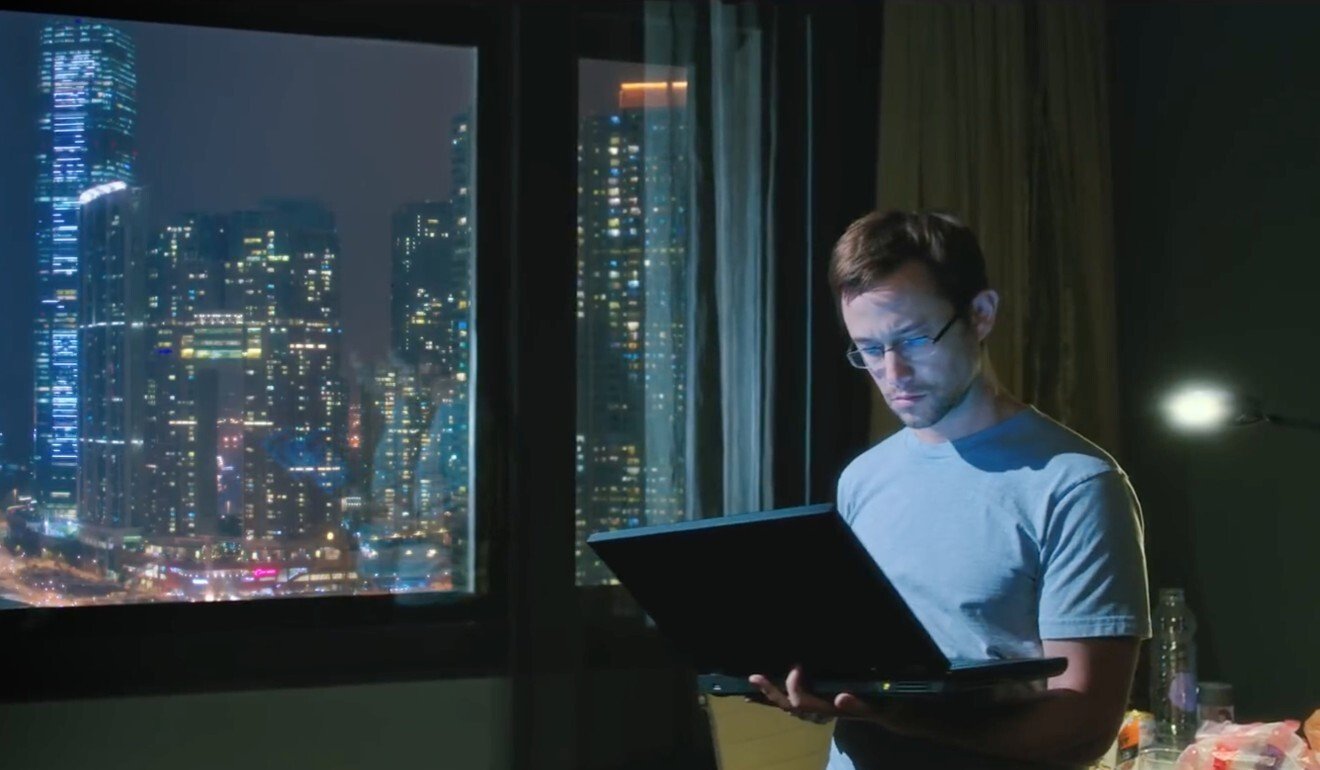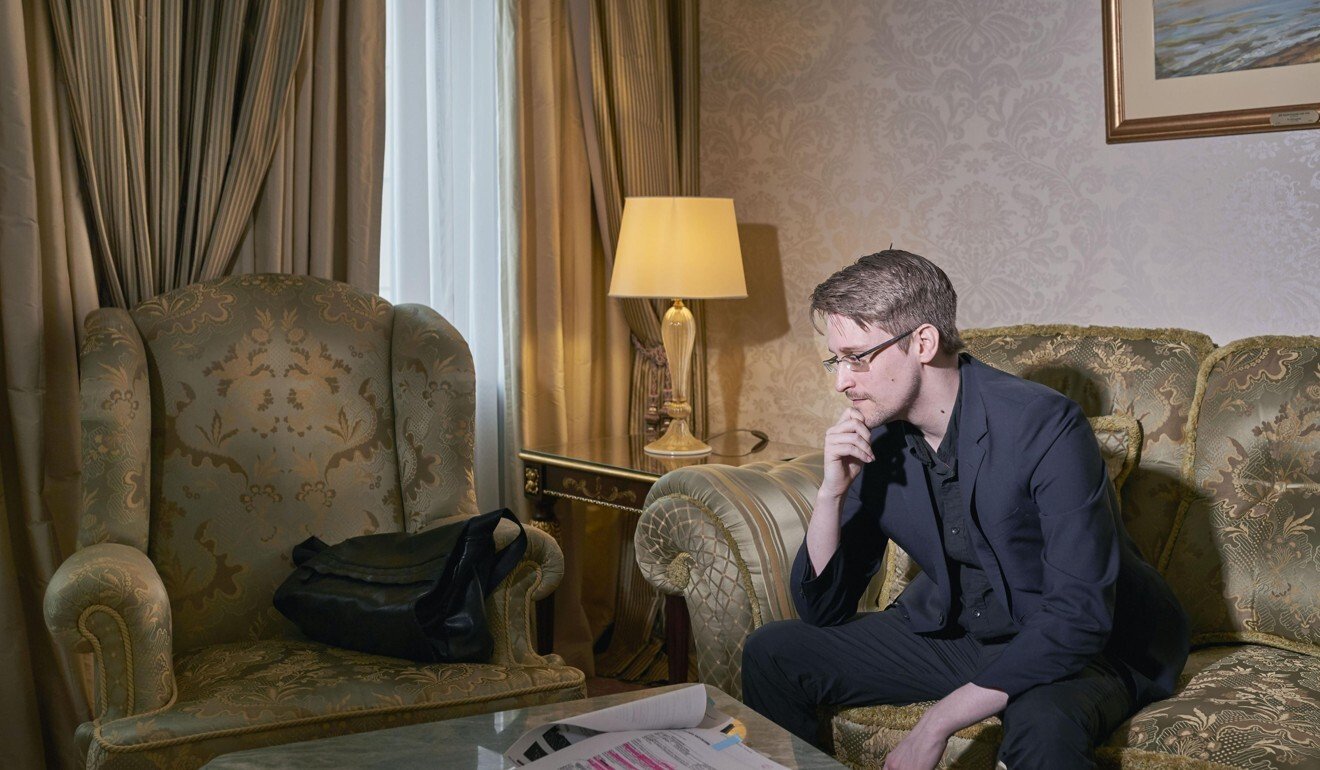
Explainer | Edward Snowden: biography, spy career, life in exile from Hong Kong to Russia
- America’s most famous whistle-blower has been living in exile since 2013
- Edward Snowden has been branded a traitor and hero for his bombshell leaks
Edward Snowden, an American contract employee at the National Security Agency, is the whistle-blower behind significant revelations that surfaced in June 2013 about the US government’s top secret, extensive domestic surveillance programmes. Snowden flew to Hong Kong from Hawaii in May 2013, and supplied confidential US government information to media outlets including South China Morning Post, before fleeing to Russia. Here’s what we know about him.
Biography
Edward Joseph Snowden was born on June 21, 1983 in Elizabeth City, North Carolina. He grew up in both North Carolina and suburban Washington, where his mother Elizabeth worked as a clerk at the National Security Agency (NSA) and his father Lonnie served in the US Coast Guard. He has an older sister, Jessica. His parents divorced in 2001, around the time Snowden would have graduated from high school.
Snowden dropped out of Arundel High School midway through the 1998-1999 academic year, when he was in the 10th grade. He later got a high school equivalency certificate and took courses at a nearby community college, although he never graduated. He also studied online for a Master's degree in computer security at the University of Liverpool in the UK, but did not complete the course.
Snowden was a fan of Japanese anime and seemed more interested in computers and technology than school homework. As a child, he took apart and reassembled a Nintendo console and, as a teenager, discovered a gaping vulnerability in the Los Alamos nuclear laboratory network.
Snowden is married to long-time partner, American performance artist Lindsay Mills. They live in Russia, where Snowden has been granted asylum. They were expecting their first child, a boy, in December 2020.
In a tweet in November 2020, Snowden said the couple planned to be “raising our son with all the values of the America we love – including the freedom to speak his mind” and that he looked forward to the day he can return to the US, “so the whole family can be reunited”.

Spy career
Snowden joined the military in 2004 with the idea of aiding the US war effort in Iraq and to “help free people from oppression”. He enlisted in the US Army Reserve as a special forces recruit, but lasted only four months after breaking both legs in a training exercise.
Later he landed his first job at the University of Maryland working at a covert NSA facility near the campus. He then went to the CIA in information technology security, rising quickly because of his understanding of the internet and his computer programming skills.
By 2007, the CIA had stationed him with diplomatic cover in Geneva, Switzerland, where he maintained computer network security. His experience there and working alongside CIA officers gradually led him to question his own role in the government.
“I was trained as a spy in sort of the traditional sense of the word in that I lived and worked undercover overseas – pretending to work in a job that I’m not – and even being assigned a name that was not mine,” Snowden said in a 2014 TV interview.
Snowden couldn’t find evidence US government was hiding aliens
He lectured at the Joint Counterintelligence Training Academy in Quantico, Virginia.
Snowden said he later secured a job with US government contractor Booz Allen Hamilton for one reason alone – to obtain evidence of Washington’s cyberspying networks. He worked with them in Hawaii for three months before his bombshell leaks on America’s vast surveillance programmes.
“My position with Booz Allen Hamilton granted me access to lists of machines all over the world the NSA hacked,” he told the Post on June 12, 2013. “That is why I accepted that position …”
As an NSA contractor, he observed hi-tech spy powers with increasing revulsion.
Analysts used the government’s collection powers to read the emails of current and former lovers and stalk them online, he wrote in Permanent Record, his first book.
One particular spy tool the NSA called XKEYSCORE allowed the government to scour the recent internet history of average Americans.
He struggled to share his concerns with his girlfriend Lindsay, now his wife.
“I couldn’t tell her that her information was being collected, that everyone’s information was being collected, which was tantamount to a government threat: if you ever get out of line, we’ll use your private life against you.”

Wanted in the US
US authorities have for years wanted Snowden returned to the United States to face a criminal trial on espionage charges brought in 2013. Snowden is believed to have taken 1.7 million computerised documents that revealed massive programmes run by the NSA that gathered information on emails, phone calls and internet use by hundreds of millions of Americans.
Evidence that the NSA was secretly building a vast database of US telephone records – the who, the how, the when, and the where of millions of mobile calls – was the first and arguably the most explosive of the Snowden revelations.
He has been charged in the United States with theft of government property, unauthorised communication of national defence information and wilful communication of classified intelligence to an unauthorised person. He could face 30 years in prison.
NSA mass spying exposed by Snowden was illegal, US court rules
Some civil libertarians have praised Snowden for revealing the extraordinary scope of America’s digital espionage operations including domestic spying programmes that senior US officials had publicly insisted did not exist.
In September 2020, seven years after Snowden blew the whistle on the mass surveillance of Americans’ telephone records, an appeal court found the programme was unlawful – and that the US intelligence leaders who publicly defended it were not telling the truth.
Intelligence officials who conduct annual classified assessments of damage from Snowden’s disclosures say the documents will continue trickling out into the public domain for years to come.
In 2014, Snowden was among the winners of a Swedish human rights award, sometimes referred to as the “alternative Nobel”, for his disclosures. He has also reportedly been nominated for a Nobel Peace Prize.

01:37
Woman who sheltered Edward Snowden granted asylum in Canada
Snowden in Hong Kong
In May and June 2013, Snowden hid in Hong Kong, before flying to Russia on June 23.
During his time in Hong Kong, he hid in the homes of three families – all of them asylum seekers who had been introduced to Snowden by their mutual lawyer in Hong Kong, Robert Tibbo. The group was four adults from Sri Lanka and the Philippines, and three stateless children.
Their role in Snowden’s story was only reported in September 2016, shortly before the release of Oliver Stone’s movie on the former NSA contractor. Tibbo, who represented the families since 2012, said that their identities were revealed to ensure their safety.
‘Snowden refugees’ call for family reunification in Canada
Before summoning a small group of journalists to Hong Kong to disclose America’s classified secrets, knowing that a return to the US was impossible, Snowden said he prepared like a man about to die. He emptied his bank accounts, put cash into a steel ammunition box for his girlfriend Lindsay and erased and encrypted his old computers.
In a series of interviews with the Post in Hong Kong at the time, Snowden said the NSA had been hacking computers in Hong Kong since 2009. Among those institutions targeted, he said, was Chinese University, which housed the Hong Kong Internet Exchange.

Snowden in movies
In 2013, four amateur filmmakers in Hong Kong beat Hollywood by producing Verax – the first film on Snowden, a five-minute thriller depicting the nail-biting intrigue surrounding the intelligence leaker when he was hiding in the city.
Shot in less than a week on a shoestring budget, the film imagines the drama which must have unfolded in Hong Kong leading up to Snowden’s leaks. The film got its title from the code name Snowden gave himself – Verax.
In 2015, the documentary Citizenfour was released. Laura Poitras’ film documents her initial meeting in Hong Kong with Snowden, as well as journalist Glenn Greenwald.
Edward Snowden unveils phone app that spies on spies
Poitras said the camera was “there when it is unfolding in real time” as Snowden exposed the US intelligence agencies’ surveillance campaign. The film is centred on Snowden’s meetings with Greenwald at the Mira Hotel in Tsim Sha Tsui.
Citizenfour won the Oscar for best documentary at the 87th Academy Awards.
“When Laura Poitras asked me if she could film our encounters, I was extremely reluctant. I’m grateful that I allowed her to persuade me,” Snowden said at the time.
A year later, Oliver Stone’s Snowden, starring Joseph Gordon Levitt, was released. It told his in dramatic form on the big screen for the first time – but the movie almost never made it to theatres.
Stone, a trenchant critic of the American political establishment, said it had been “turned down by every major studio”.
Independent production company Open Road, which picked up a best film Oscar for Spotlight, agreed to distribute the movie in the United States.

Life in Russia
While hiding in Hong Kong, Snowden was hopeful of travelling on to Cuba and then Ecuador. But he got trapped in Moscow when the US government revoked his passport, and has been living there ever since.
“I never chose to come to Russia,” Snowden told German network ZDF in an interview in 2019. “I was actually transiting through Russia to Latin America. “It’s the US government that orchestrated trapping me in Russia by cancelling my passport.”
Snowden keeps a low profile in Russia, where he lives to avoid arrest. He has praised the country’s natural beauty and the warmth of its people, while using social media to criticise government policy from time to time. In October 2020, Russia granted him permanent residency rights, a step towards Russian citizenship if he wants it.
Edward Snowden slams China censorship of his book
In November 2020, Snowden said he had applied for Russian citizenship but would keep his US nationality.
Snowden has spent many of his days behind a computer and taking part in virtual meetings with fellow board members at the Freedom of the Press Foundation.
When he does go out, he tries to shake up his appearance, sometimes wearing different glasses. He keeps his head down when he walks past buildings equipped with closed-circuit television. Once, he said, he was recognised in a Moscow museum and consented to a selfie request from a teenage girl speaking German-accented English.
In 2019, Snowden published Permanent Record. In his memoir, Snowden tells his life story in detail for the first time and explains why he chose to risk his freedom to become perhaps the most famous whistle-blower of all time.
South China Morning Post, Reuters, Associated Press and Tribune News Service
